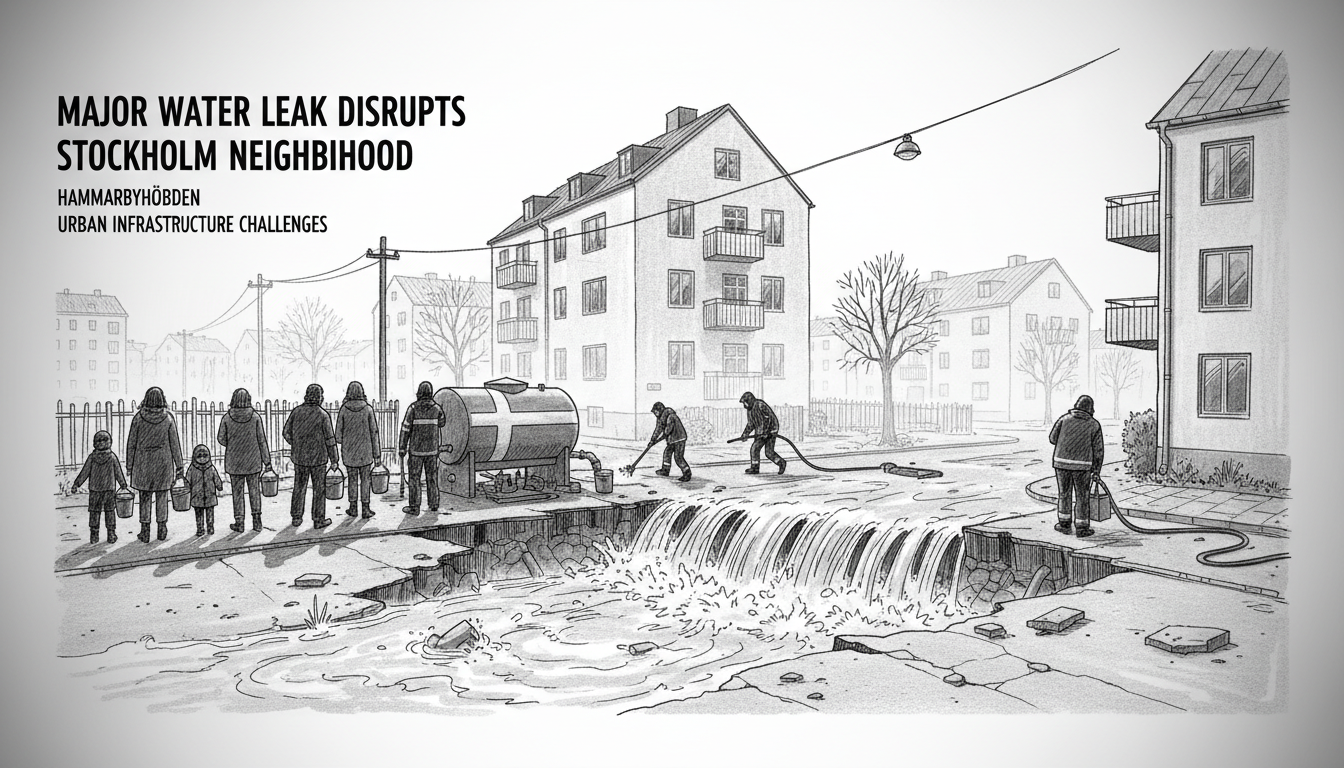A substantial water leak disrupted daily life in Hammarbyhöjden on Monday morning, creating challenges for residents and emergency services alike. The incident began around 8 AM when authorities received alerts about water gushing from underground pipes.
Alexandra Fleetwood from Stockholm's water utility addressed the situation directly. "Crews will excavate the area to access the damaged pipes," she confirmed in a statement. "We expect residents will have their water restored later today."
The force of the escaping water proved powerful enough to compromise asphalt surfaces in the affected area. Water seeped into basement levels of nearby buildings, adding to the disruption. Many households found themselves completely without running water during the morning hours.
Stockholm's infrastructure team responded quickly by establishing temporary water stations at Johan Printz väg in neighboring Johanneshov. Residents could collect drinking water there while repairs continued. For those who still had water flowing from their taps, officials noted it might appear rusty but assured people that running the water for several minutes would clear the discoloration.
Police have initiated an investigation into possible public endangerment through negligence. This standard procedure examines whether proper maintenance protocols were followed and if any party bears responsibility for the infrastructure failure.
This incident highlights the ongoing challenges of maintaining aging urban infrastructure in Swedish cities. Stockholm's water system, while generally reliable, faces increasing pressure from urban development and climate factors. The Hammarbyhöjden area has seen substantial residential growth in recent years, placing additional demands on existing utilities.
For international readers and newcomers to Sweden, this situation demonstrates how Swedish municipalities typically handle such crises. The response follows established protocols with clear communication, temporary solutions for affected residents, and systematic investigation into causes. The presence of police investigators indicates the seriousness with which Sweden treats public infrastructure safety.
Local residents expressed frustration but also understanding. "It's inconvenient, but they're working to fix it," noted one Hammarbyhöjden resident who preferred not to be named. "We know these things happen in any city."
Water infrastructure issues in Stockholm neighborhoods typically resolve within hours, though complete restoration of normal water pressure and quality might take slightly longer. The incident serves as a reminder of the complex systems supporting daily urban life and the importance of ongoing infrastructure investment.

